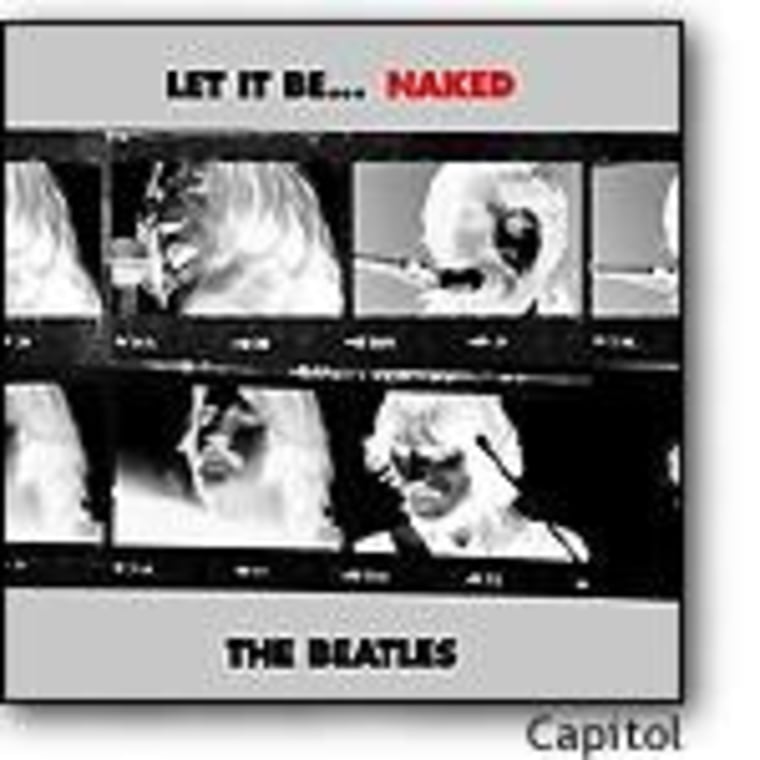It is one of the most infamous episodes of the Beatles’ bottomless lore. The January 1969 sessions for the “Let It Be” album turned out to be the beginning of the end for the world’s greatest rock ‘n’ roll group. Although recorded before “Abbey Road,” “Let It Be” was the last Beatles record to hit the marketplace, in 1970, the belated product of insurmountable bickering and bad will.
CHILLY IN MORE ways than one — the band members were barely on speaking terms, and the vast, bare sound stage at London’s Twickenham Studios was insufficiently heated in wintertime — the sessions were designed as an effort to return to the Beatles’ roots as a spontaneous bar band, covering old favorites and running through raw demo versions of each other’s newest compositions. It was an attempt to “Get Back,” as Paul McCartney sang on one of several hits the album spawned. But it backfired.
“Get Back” was the last track on the original release of “Let It Be,” but it kicks off “Let It Be… Naked,” the newly reconsidered session document that Sir Paul has been proposing for years. The album, which comes out Tuesday (Nov. 18), features a revised track listing that places the philosophical title cut, “Let It Be,” at the end of the record. That’s fitting. It also omits two afterthoughts, “Dig It” and “Maggie Mae,” adding in their place a superior version of John Lennon’s soulful “Don’t Let Me Down,” which was recorded early in the session and released as the b-side to the “Get Back” single.
The most widely publicized change is the stripped-down production, which peels back the orchestral larding of the celebrated producer Phil Spector. Well after the sessions ended, Lennon and George Harrison enlisted Spector to help cobble together a sellable product. Notably absent on the new version are the swelling strings on McCartney’s “The Long and Winding Road,” often rumored to be a pet peeve of Sir Paul.

To these ears, many of the fixes are welcome. The remix gives a true sense that you’re an audience of one with the world’s most astounding pop group; Lennon’s “Across the Universe,” for instance, reverts to its original state as a gentle acoustic head-trip, without Spector’s unnecessary chorale, and it’s far preferable this way.
But “Let It Be” was an official “Beatles” album, for crying out loud, and any changes are bound to throw some listeners for a loop. Fanatics will undoubtedly miss the conversational tone of the original release. Gone is the goofy, endearing studio chatter, such as Lennon’s “I dig a pygmy” intro. And “Get Back” ends too abruptly, shorn of the comic coda we’ve come to know and love: “I’d like to say thank you on behalf of the group and ourselves, and I hope we passed the audition.”
Every Beatle fan will have his or her own opinion, and that’s one of the many beauties of the band’s legacy: Millions still consider themselves on the most intimate of terms with this music. “Well, you can celebrate anything you want,” Lennon bellows on “Dig a Pony.” All these years later, we’re still celebrating almost everything these four young men accomplished together, even in their toughest times.
James Sullivan covers pop culture for the San Francisco Chronicle.